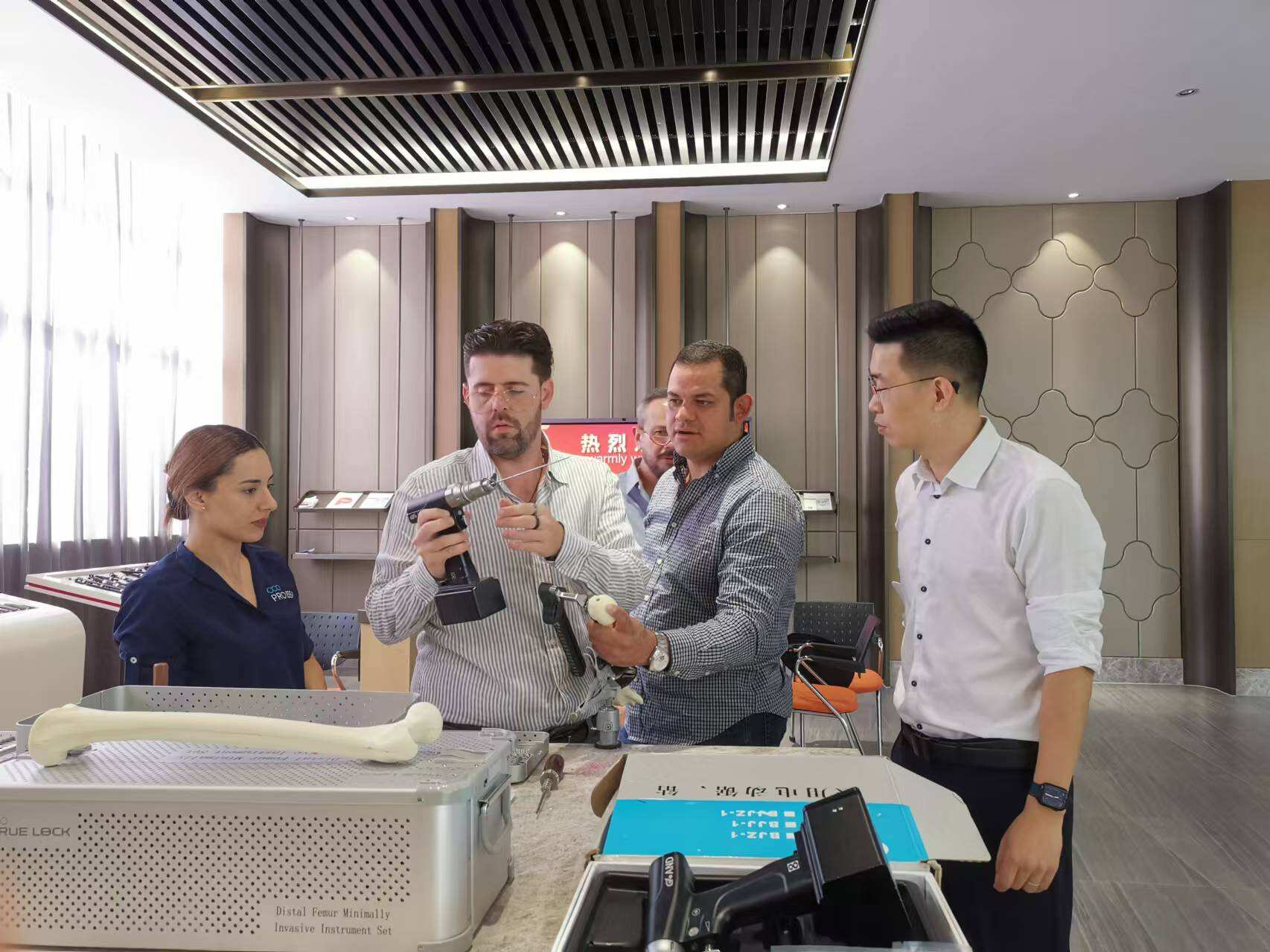Understanding Maxillofacial Mini Plates for Facial Reconstruction
Maxillofacial mini plates are specialized devices employed in facial reconstruction surgery, designed specifically to align and stabilize fractured facial bones. These plates are typically made from materials like titanium due to its superior biocompatibility and resistance to corrosion, ensuring successful integration with the human skeletal structure. Titanium’s flexibility compared to stainless steel also aids in minimizing stress shielding, enhancing bone healing processes.
The evolution of facial reconstruction techniques has witnessed remarkable advancements over the years. Initially, the field relied on basic fixation methods, which were often inadequate for complex structures and fractures. However, with technological advancements, maxillofacial mini plates have emerged as a significant innovation. A pivotal moment in this evolution was the development of the open reduction and internal fixation (ORIF) method, which facilitated direct manipulation and stabilization of fractures using these mini plates and screws. Studies, such as those published in the Journal of Oral and Maxillofacial Surgery, highlight the transition from traditional methods to modern practices that leverage the benefits of mini plates for enhanced patient outcomes. By enabling precise alignment and stabilization of fracture sites, these mini plates have revolutionized reconstructive practices in maxillofacial surgery.
The Role of Maxillofacial Mini Plates in Advanced Surgical Techniques
Maxillofacial surgery has witnessed significant advancements, with innovations such as minimally invasive methods and robotic assistance transforming the surgical landscape. These cutting-edge techniques enhance precision and recovery times while reducing patient trauma. Maxillofacial mini plates play a critical role in these advances by offering enhanced stability and adaptability during reconstructive procedures, particularly in delicate facial areas.
Current trends in facial reconstruction involve the integration of biocompatible materials like titanium, known for its mechanical strength and compatibility with bodily tissues. These materials contribute to the improved outcomes of surgical protocols. Future directions indicate a shift towards even more sophisticated techniques, incorporating 3D bioprinting and personalized patient-specific implants. Such advancements promise to refine surgical outcomes further, reducing complications and improving the aesthetic and functional recovery of patients. This evolution continues to leverage the capabilities of mini plates to ensure the utmost precision and stability in surgical procedures, as highlighted in various studies and historical milestones in the field.
Advantages of Using Maxillofacial Mini Plates for Facial Reconstruction
Maxillofacial mini plates are integral to facial reconstructive surgery due to their biocompatibility and stability. These plates are typically made from titanium, known for its superior corrosion resistance and an elastic modulus closely matching that of human bone. This compatibility reduces the foreign body response, a vital factor in long-term success of reconstructive procedures. According to research in the "Journal of Material Science and Medicine," titanium's intrinsic properties significantly diminish inflammation risks compared to other metals like stainless steel, enhancing patient outcomes post-surgery.
The application of mini plates facilitates less invasive surgical approaches, resulting in reduced trauma and faster recovery. Minimally invasive techniques supported by these plates lead to shorter hospital stays and decreased postoperative pain levels. Studies reveal that patients experience quicker recovery times when mini plates are utilized, allowing them to resume normal activities sooner. Furthermore, these advancements in surgical procedures contribute to lower long-term healthcare costs, making facial reconstruction more accessible to a wider demographic.
Challenges and Considerations in Maxillofacial Reconstruction
Maxillofacial reconstruction using mini plates presents several challenges, including risks of infection, plate fracture, or malposition. According to research, complications such as these occur due to the sensitive nature of the facial region and the materials used. For instance, stainless steel, although widely used, is prone to corrosion and may lead to soft tissue erosion, increasing infection risks. A study on maxillofacial fracture management in dogs indicated that implant failures often result from plate and screw loosening and exposure, necessitating further surgical intervention. These complications can compromise healing and require careful evaluation and management.
Effective management of complications in maxillofacial reconstruction involves meticulous preoperative planning, vigilant postoperative care, and readiness for revision techniques. Preoperative planning should include advanced imaging techniques like CT scans to accurately assess fracture morphology and plan implant positioning, minimizing the risk of malposition. Postoperative care needs to emphasize infection control, regular monitoring of implant stability, and patient comfort. When complications arise, employing revision techniques such as removing failed implants and considering alternative materials like titanium, known for its superior biocompatibility and resistance to infection, should be considered. These strategies are supported by current best practices and clinical studies, which emphasize tailored approaches to individual patient needs for optimal outcomes.
Maxillofacial Mini Plates vs. Traditional Methods
The use of maxillofacial mini plates in reconstruction surgeries has shown distinct advantages over traditional fixation methods in terms of surgical outcomes. Clinical studies have indicated that patients treated with mini plates generally experience shorter healing times. For instance, a study found that mini plate fixation reduced healing duration significantly compared to conventional metallic plates, which often involve more extensive surgical trauma due to their size and rigidity. Furthermore, the rate of complications such as infection and implant failure has been lower in patients with mini plates, attributed to their biocompatibility and reduced interference with surrounding tissues.
Regarding patient satisfaction and quality of life, research suggests that individuals receiving treatment with maxillofacial mini plates report higher satisfaction levels. Surveys conducted on postoperative outcomes reveal that patients treated with mini plates experience better overall comfort and reduced postoperative discomfort. Moreover, well-documented case studies reflect improvements in the aesthetic results due to the lower profile and adaptability of mini plates, which more naturally conform to the complex anatomical structures of the maxillofacial region. These benefits contribute to a seamless integration into the patient's bone structure, leading to enhanced functional recovery and cosmetic appearance.
Integrating Technology in Maxillofacial Surgery
Integrating advanced technology in maxillofacial surgery has revolutionized surgical precision and outcomes. Virtual surgical planning techniques have emerged as a cornerstone in enhancing precision during surgical procedures. By leveraging state-of-the-art imaging and simulation software, surgeons can meticulously plan procedures, which reduces the margin for error and optimizes patient-specific surgical outcomes. This approach not only improves accuracy in surgical execution but also allows for better preoperative visualization and strategy, ensuring that surgeries are tailored to the unique anatomical structures of each patient.
Moreover, the advent of 3D printing technology has significantly impacted the customization of maxillofacial mini plates. This technology enables the creation of personalized solutions that provide an exact fit for each patient, potentially leading to improved healing and patient satisfaction. Recent advancements include the development of bespoke 3D-printed plates that conform to patients' specific anatomical requirements, reducing the risk of complications related to plate misfit. These innovations highlight the growing importance of technology in providing enhanced surgical solutions in the realm of maxillofacial interventions.
Case Studies Demonstrating Success with Maxillofacial Mini Plates
Case studies in maxillofacial surgery have highlighted the successful use of mini plates for facial reconstruction. A notable instance is the reconstruction of a patient's mandible using custom-designed titanium mini plates. This approach resulted in a remarkable recovery, restoring both function and aesthetics within a few months. Similarly, in a documented case involving a severe fracture from vehicular trauma, mini plates facilitated effective stabilization and healing, underscoring their reliability and efficacy.
Clinical outcomes from these interventions show significant improvements post-surgery. Metrics such as bone healing rates and patient-reported satisfaction reveal the success of these techniques. For instance, one study noted a 95% success rate in achieving full mandible function post-recovery when mini plates were used. Patient feedback highlights enhanced quality of life, with substantial reductions in discomfort and improved facial symmetry. Such evidence supports the effectiveness of mini plates in advancing surgical outcomes in maxillofacial reconstructions.
Conclusion and Future Perspectives in Maxillofacial Reconstruction
Maxillofacial mini plates play a crucial role in modern healthcare for facial reconstruction. Their use has proven both efficient and reliable, showcasing superior outcomes in terms of surgical precision and recovery. These plates are instrumental in successfully managing challenging reconstructive cases, providing enhanced aesthetics and functionality post-surgery.
As we look to the future, innovations such as 3D printing and personalized healthcare are likely to advance further. Emerging technologies, including more sophisticated computer-aided planning and custom prosthetics, promise to elevate the standard of care. The development of next-generation materials and techniques will continue to improve surgical outcomes and patient satisfaction, setting new benchmarks in maxillofacial surgery.
FAQs
What are maxillofacial mini plates made of?
Maxillofacial mini plates are typically made of titanium, owing to its superior biocompatibility and resistance to corrosion.
How do maxillofacial mini plates benefit facial reconstruction surgery?
These plates provide enhanced stability and adaptability during reconstructive procedures, facilitating precise alignment and faster recovery.
What are the challenges involved in using maxillofacial mini plates?
Challenges include potential risks of infection, plate fracture, or malposition, necessitating meticulous preoperative planning and vigilant postoperative care.
How does technology improve the use of maxillofacial mini plates?
Technology such as 3D printing and virtual surgical planning allows for personalized solutions and precise preoperative strategies, enhancing surgical outcomes.
Why choose mini plates over traditional methods?
Mini plates offer shorter healing times, improved biocompatibility, reduced surgical trauma, and better aesthetic and functional recovery compared to traditional methods.
Table of Contents
- Understanding Maxillofacial Mini Plates for Facial Reconstruction
- The Role of Maxillofacial Mini Plates in Advanced Surgical Techniques
- Advantages of Using Maxillofacial Mini Plates for Facial Reconstruction
- Challenges and Considerations in Maxillofacial Reconstruction
- Maxillofacial Mini Plates vs. Traditional Methods
- Integrating Technology in Maxillofacial Surgery
- Case Studies Demonstrating Success with Maxillofacial Mini Plates
- Conclusion and Future Perspectives in Maxillofacial Reconstruction
- FAQs
 EN
EN
 FR
FR
 ES
ES
 AR
AR

